10 Must-Have Elements to Achieve the Perfect Japandi Aesthetic
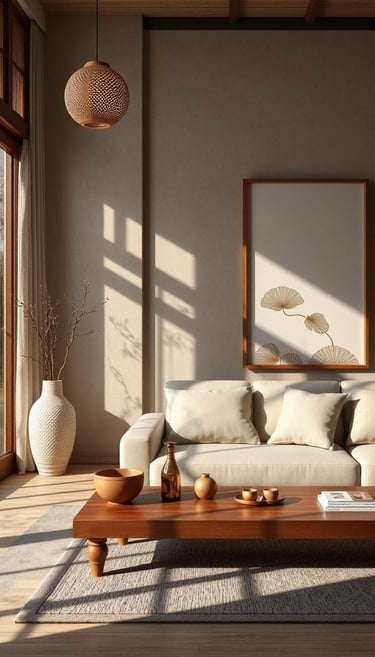

If minimalism and coziness had a love child, it would be Japandi. This dreamy design style merges the clean, functional lines of Japanese minimalism with the warm, inviting charm of Scandinavian hygge. Think serene spaces, muted tones, and furniture that whispers, “I’m chic, but I won’t let you stub your toe.”
Japandi isn’t just about aesthetics; it’s about creating harmony in your home. It’s living with less but feeling like you have more—a celebration of functionality, beauty, and intentional living. If you’re ready to transform your space into a Japandi masterpiece, let me walk you through the ten essential elements that define this style.
1. A Neutral Color Palette
Japandi starts with a calm, neutral foundation. Think soft whites, warm beiges, and earthy grays. These shades create a sense of tranquility and provide the perfect backdrop for natural textures and subtle accents.
When I first experimented with Japandi, I had to fight the urge to add pops of bold color (I’m looking at you, millennial pink). But trust me, sticking to muted tones pays off. Your space will feel calm, cohesive, and—dare I say—zen.
2. Natural Materials
Wood is the star of the Japandi show, but not just any wood—think light oak, ash, or bamboo. These materials bring warmth and texture without overwhelming the space. Pair them with other natural materials like linen, cotton, and even ceramics.
A Japandi home should feel connected to nature, so choose furniture and décor that highlight raw, organic beauty. My personal favorite? A gorgeous hand-thrown ceramic vase that looks like it could’ve come straight out of a Kyoto pottery studio.
3. Functional Furniture
In Japandi, form always follows function. Each piece of furniture should serve a purpose and look good doing it. Low-profile sofas, clean-lined tables, and multi-functional storage solutions are staples of this style.
When I swapped my oversized sectional for a sleek, Japandi-inspired sofa, I thought I’d miss the extra cushions. Instead, I found myself loving the simplicity—and the extra floor space.
4. Decluttered Spaces
If you’re the type to hoard random knick-knacks, Japandi might feel like an intervention. This style thrives on open, uncluttered spaces. Every item should have a purpose, and if it doesn’t, it’s time to Marie Kondo it.
It took me a while to embrace this minimalist mindset. Letting go of my collection of mismatched mugs was tough, but the sense of clarity and peace that followed? Totally worth it.
5. Low Furniture with Clean Lines
Japandi furniture often sits low to the ground, inspired by traditional Japanese design. Low furniture creates a sense of groundedness and connection to the space. Pair that with clean, simple lines, and you’ve got furniture that’s as practical as it is beautiful.
Imagine lounging on a low-profile sofa with a cup of tea, surrounded by natural light and soft textures. Bliss, right?
6. Textures and Layers
While Japandi is minimalist, it’s never cold or stark. The secret? Layered textures. Think linen curtains, a soft wool throw, or a plush jute rug underfoot. Mixing textures adds warmth and dimension, making the space feel cozy yet sophisticated.
My favorite Japandi hack is layering a textured rug over a wooden floor. It’s like your room is giving itself a warm hug.
7. Subtle Accents
Japandi isn’t about flashy décor. Instead, it celebrates subtlety and craftsmanship. Look for small accents like handcrafted ceramics, simple artwork, or a few carefully chosen books.
I once splurged on a handcrafted lamp that seemed almost too simple. But every time I see it softly glowing in the evening, I’m reminded that less really is more.
8. Natural Light and Soft Illumination
A Japandi space thrives on natural light. Large, unobstructed windows are ideal, but soft, warm lighting works beautifully in the evenings. Think paper lanterns, frosted glass lamps, or candles that create a cozy, inviting glow.
Pro tip: If your home doesn’t have an abundance of natural light (hi, city apartment dwellers), invest in warm-toned LED bulbs. They make a world of difference.
9. Indoor Plants
Plants are a Japandi essential. They breathe life into the space and reinforce the connection to nature. Opt for low-maintenance greenery like snake plants, monstera, or fiddle-leaf figs.
My current obsession? A bonsai tree that I’ve somehow managed not to kill. It’s like having a tiny, zen forest on my coffee table.
10. The Art of Wabi-Sabi
Japandi embraces the Japanese concept of wabi-sabi, which celebrates imperfection. A slightly uneven ceramic bowl, a weathered wooden table—these things add character and authenticity.
One of my favorite pieces in my home is a handmade vase with a small crack. Instead of hiding it, I highlight it. It’s a reminder that beauty isn’t about perfection—it’s about the story behind the object.
Create Your Japandi Haven
Japandi is more than just a design trend—it’s a way of living. It’s about creating a home that feels calm, intentional, and deeply connected to nature. With these ten elements, you’ll be well on your way to transforming your space into a serene Japandi sanctuary.
Now, grab that minimalist ceramic mug (you know the one) and toast to the beauty of simplicity.
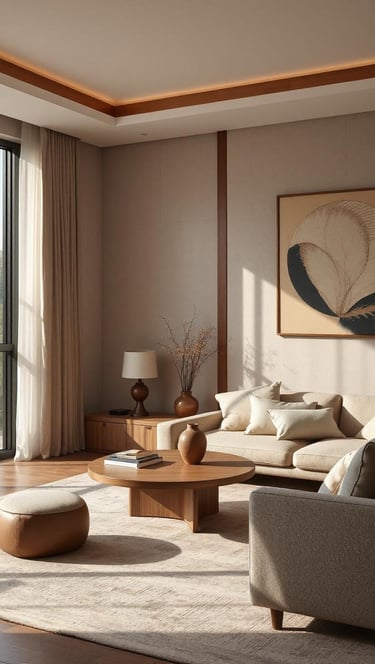

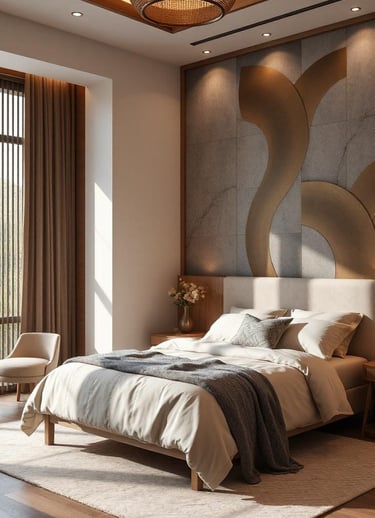

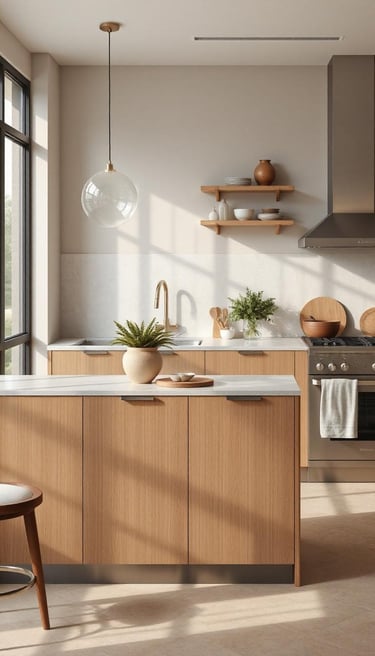

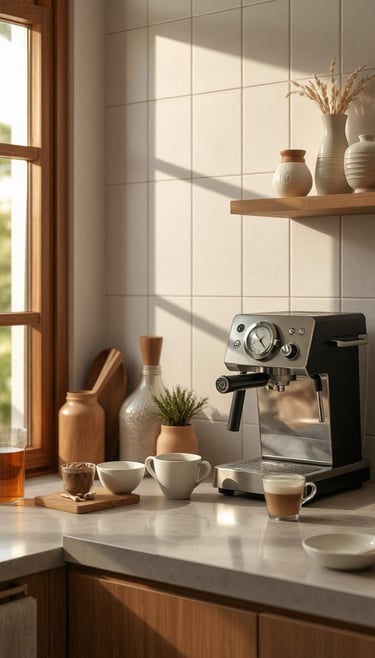



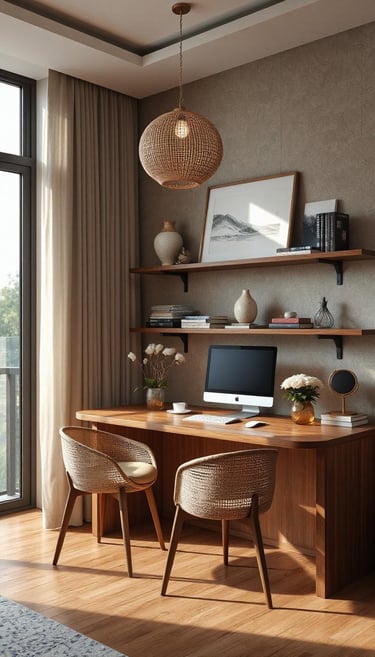

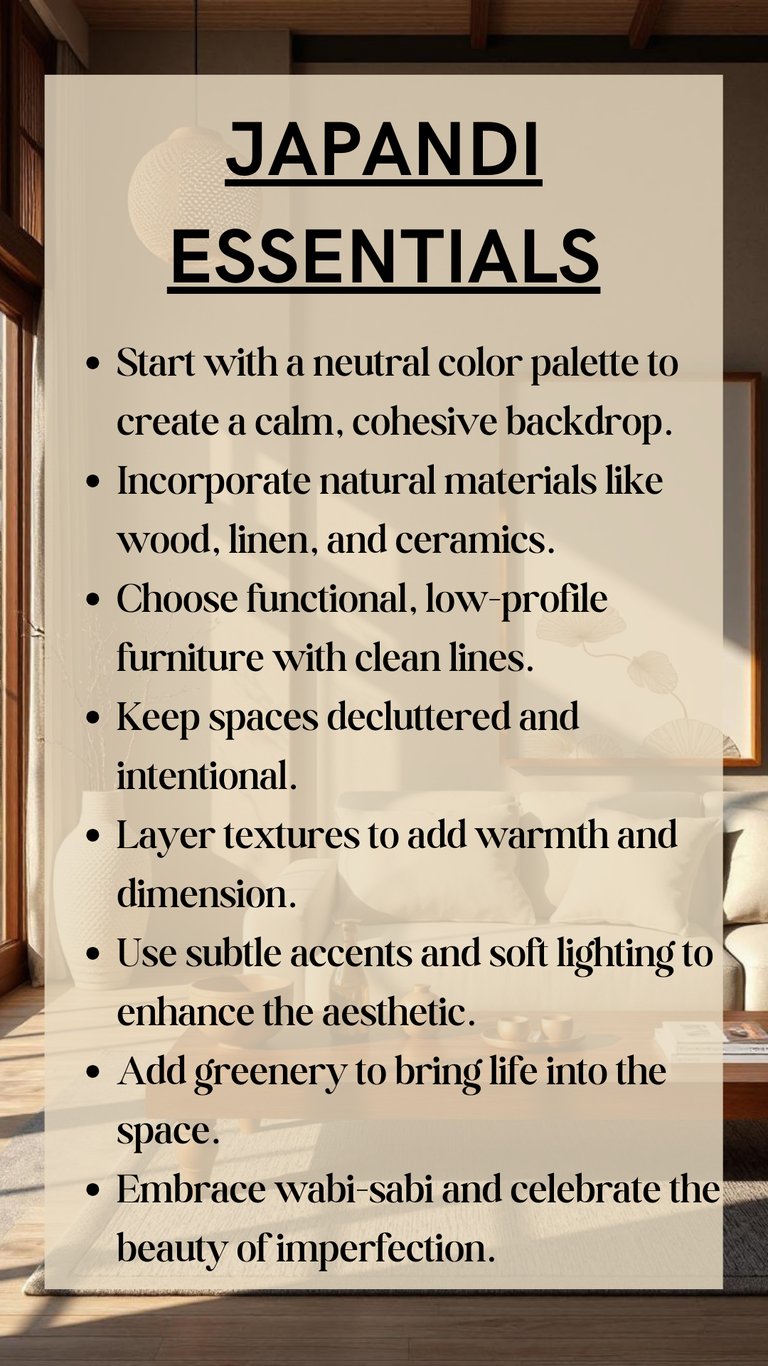





Willow & Linen
Embrace slow living and create cozy moments.
let's stay in touch
© 2024. All rights reserved.
